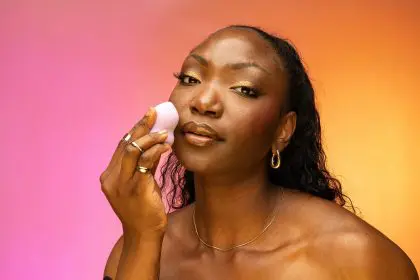Walk down any skincare aisle and you’ll notice something interesting happening – zinc oxide is everywhere. From high-end mineral sunscreens to drugstore diaper creams, this white powdery ingredient has quietly become one of the most ubiquitous components in modern skincare. But behind its growing popularity lies a fascinating story of science, safety concerns, and skincare innovation that’s reshaping how we think about protecting our skin.
The zinc oxide conversation has evolved dramatically over the past few years, moving from a simple sunscreen ingredient discussion to a complex debate about nanoparticles, skin penetration, and the future of mineral-based beauty products. Understanding what’s really happening with this ingredient can help you make informed decisions about your skincare routine and separate fact from fiction in an increasingly crowded beauty marketplace.
What makes zinc oxide different from other skincare ingredients
Unlike chemical sunscreen ingredients that absorb into the skin and then absorb UV rays, zinc oxide works by sitting on top of your skin like a microscopic shield. This physical barrier approach reflects and scatters both UVA and UVB rays before they can penetrate and damage your skin cells.
The ingredient itself comes in two main forms – synthetic versions created in laboratories and natural forms derived from the mineral zincite. Both versions function identically on your skin, creating that protective barrier that has made zinc oxide a cornerstone of mineral sunscreen formulations.
What sets zinc oxide apart from other UV-blocking ingredients is its broad-spectrum protection capabilities. While many chemical sunscreens excel at blocking either UVA or UVB rays, zinc oxide provides comprehensive protection across the entire UV spectrum. This complete coverage has made it increasingly popular among dermatologists and skincare enthusiasts who want reliable, all-day protection.
The versatility of zinc oxide extends well beyond sun protection too. Its natural anti-inflammatory and healing properties have made it a go-to ingredient for treating everything from diaper rash to minor cuts and scrapes. This dual functionality – protection and healing – has contributed to its widespread adoption across different types of skincare products.
The nanoparticle controversy that’s dividing opinions
One of the most heated debates surrounding zinc oxide centers on the use of nanoparticles in modern formulations. Traditional zinc oxide sunscreens are notorious for leaving a thick, white cast on the skin that many people find cosmetically unacceptable. To address this issue, manufacturers began creating zinc oxide nanoparticles – extremely tiny versions of the ingredient that blend more seamlessly into skin.
These nanoparticles solved the aesthetic problem but created new concerns about safety. Critics worry that particles small enough to avoid leaving a white cast might also be small enough to penetrate through the skin and potentially enter the bloodstream. This possibility has raised questions about long-term accumulation in the body and potential health effects.
The nanoparticle debate has become particularly intense because it touches on broader concerns about how new technologies in skincare might affect our health in ways we don’t yet fully understand. Some consumers have become wary of any product containing nanoparticles, while others argue that the benefits outweigh theoretical risks.
Current research suggests that zinc oxide nanoparticles have difficulty penetrating beyond the outermost layer of skin, known as the epidermis. Multiple studies have found that these particles tend to get trapped in the upper layers of skin rather than making their way into deeper tissues or the bloodstream. However, the relative newness of nanoparticle technology means long-term studies are still ongoing.
How zinc oxide became skincare’s healing hero
Beyond its sun protection capabilities, zinc oxide has earned a reputation as one of skincare’s most effective healing ingredients. Its anti-inflammatory properties make it particularly valuable for treating irritated, inflamed, or damaged skin conditions.
The ingredient’s ability to create a protective barrier while simultaneously soothing inflammation has made it a staple in treatments for eczema, dermatitis, and other chronic skin conditions. Many people find that zinc oxide-based products provide relief when other treatments have failed, particularly for sensitive skin that reacts poorly to chemical ingredients.
Zinc oxide’s healing properties extend to wound care as well. The ingredient helps create an optimal environment for skin repair by protecting damaged areas from further irritation while allowing the natural healing process to proceed. This dual action – protection plus healing support – has made it valuable for treating everything from minor cuts to more serious skin injuries.
The anti-bacterial properties of zinc oxide add another layer of benefit for problematic skin. By helping to control bacterial growth on the skin’s surface, zinc oxide can be particularly helpful for people dealing with acne or other bacterial skin issues, though it’s typically used as a supportive ingredient rather than a primary acne treatment.
The safety profile that’s reassuring consumers
Regulatory agencies have extensively evaluated zinc oxide’s safety profile, leading to its classification as generally recognized as safe and effective for use in skincare products. This designation reflects decades of use and research showing that zinc oxide poses minimal risk for most people when used as directed.
The ingredient’s safety record is particularly impressive when compared to some chemical sunscreen ingredients that have raised concerns about hormone disruption and environmental impact. Zinc oxide’s physical mode of action means it doesn’t need to be absorbed into the skin to be effective, reducing the likelihood of systemic effects.
However, like any skincare ingredient, zinc oxide isn’t appropriate for everyone. Some individuals may experience allergic reactions, though these are relatively rare. More commonly, people with very dry skin may find that zinc oxide-based products are too drying, particularly if used frequently or in high concentrations.
The ingredient can also cause skin irritation in some sensitive individuals, particularly when used in areas where skin is already compromised or irritated. This is why patch testing is always recommended before incorporating any new zinc oxide product into your routine, especially if you have sensitive skin or known allergies.
Comparing zinc oxide to other popular sunscreen ingredients
The sunscreen ingredient landscape includes both mineral and chemical options, each with distinct advantages and drawbacks. Zinc oxide stands out among mineral sunscreens for its comprehensive UV protection, but understanding how it compares to other options can help you make informed choices.
Titanium dioxide, the other major mineral sunscreen ingredient, offers good UV protection but doesn’t cover the full spectrum as comprehensively as zinc oxide. Many products combine both ingredients to maximize protection while minimizing the white cast that each can produce individually.
Chemical sunscreen ingredients like avobenzone, octinoxate, and oxybenzone work differently by absorbing UV rays after being absorbed into the skin. While these ingredients often feel lighter and blend more easily, some have raised concerns about potential hormone disruption and coral reef damage.
The choice between mineral and chemical sunscreens often comes down to personal preference, skin sensitivity, and lifestyle factors. Zinc oxide-based products tend to be better tolerated by sensitive skin and provide immediate protection upon application, while chemical sunscreens may feel more cosmetically elegant but require time to become effective.
The cosmetic challenge that’s driving innovation
One of the biggest obstacles to zinc oxide’s widespread acceptance has been its tendency to leave a white or grayish cast on the skin. This cosmetic issue has been particularly problematic for people with darker skin tones, leading to lower sunscreen usage rates in these populations despite higher risks for certain types of skin damage.
The beauty industry has responded to this challenge with remarkable innovation. Tinted zinc oxide formulations now offer multiple shade options that blend seamlessly with different skin tones. These products maintain the protective benefits of zinc oxide while addressing the aesthetic concerns that previously limited its appeal.
Micronized and nanoparticle formulations represent another approach to the white cast problem. By making zinc oxide particles smaller, manufacturers have created products that blend more easily while maintaining protective effectiveness. The key is finding the right balance between particle size, protection, and safety.
Some companies have also developed combination products that blend zinc oxide with other ingredients to improve texture and appearance. These formulations might include moisturizing agents, color-correcting pigments, or other mineral ingredients that work together to create a more appealing final product.
Special considerations for different age groups
Zinc oxide’s safety profile makes it suitable for most age groups, but there are important considerations for specific populations. Very young children and infants require special attention when it comes to zinc oxide products, as their skin is more sensitive and permeable than adult skin.
For babies under six months, many pediatricians recommend avoiding sunscreen altogether and relying instead on protective clothing and shade. When zinc oxide products are used on young children, it’s important to choose formulations specifically designed for pediatric use and to apply them carefully to avoid eye contact.
Older adults may find zinc oxide particularly beneficial due to age-related changes in skin structure and healing capacity. The ingredient’s protective and healing properties can be especially valuable for mature skin that may be more prone to damage and slower to heal from minor injuries.
Pregnant and breastfeeding women often prefer zinc oxide-based products because of their minimal absorption and excellent safety profile. The physical barrier approach means there’s little concern about systemic absorption that could potentially affect developing babies.
Making zinc oxide work in your routine
Successfully incorporating zinc oxide into your skincare routine requires understanding how it interacts with other products and how to apply it effectively. The ingredient works best when applied to clean, dry skin as the final step in your morning routine, after moisturizer but before makeup.
The amount of product you use matters significantly for effectiveness. Sunscreen experts recommend using about a quarter teaspoon of product for your face and neck – more than most people typically apply. Under-application dramatically reduces protection, so being generous with zinc oxide products is essential.
Reapplication throughout the day is crucial for maintaining protection, especially if you’re spending time outdoors, swimming, or sweating. Zinc oxide products generally need to be reapplied every two hours for optimal effectiveness, though this may vary based on your activities and the specific product formulation.
Storage and product longevity also affect zinc oxide’s effectiveness. These products should be stored in cool, dry places away from direct sunlight. Extreme temperatures can affect the stability of zinc oxide formulations, potentially reducing their protective capabilities.
Understanding zinc oxide’s place in modern skincare helps you make informed decisions about sun protection and skin health. While debates about nanoparticles and long-term safety continue, current evidence supports zinc oxide as a safe, effective ingredient for most people. As research continues and formulations improve, zinc oxide will likely remain a cornerstone of protective skincare for years to come.











